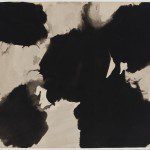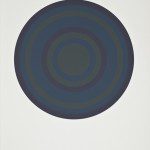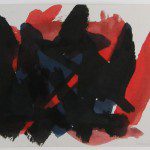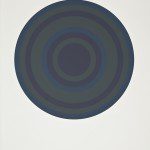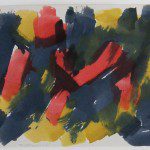Text by James D. Campbell
Much critical ink has been spilled extolling the virtues of the sculptures and paintings of Claude Tousignant. (And I plead somewhat guilty to that crime myself.) Less so on his daunting inventory of works on paper, which date from the earliest beginnings of his project through to the present. (And I plead guilty to that neglect as well). Why so neglected? From the 1950s through today, this artist, like so many others, chose to exhibit what the public wanted to see. For the most part, that meant paintings and sculptures. Of course, he also exhibited works on paper, but only intermittently. The truth is that the full breadth of the artist’s creative lifetime is there to be found on paper: in watercolours, inks, oils, lithographs, sketches, collages and so on.
Tousignant’s status as one of the most important artists now working is beyond doubt. A further proof of that stature can be found in the technical virtuosity of his works on paper, which afford a fulsome measure of his genius. Paper has always been a support that, for him, offers a fertile ground for experimentation. Some are sketches for paintings and environmental installations, but not many. Most were meant to stand alone. And they do.
The small works from the 1950s are dazzling. Here the artist’ pure instinctual love of pure chroma comes shining through in an almost Fauvist way (think of Kees van Dongen’s rugs, cloaks, shawls and throws with their clustered aggregates of pure chroma and you will see what I mean). Long before he painted his first monochromes on canvas, his ardour for and intoxication with pure colour seeps out of his works on paper like some lovely distillate of eye, mind and spirit working in concert. Could he have painted those monochromes without these myriad attempts, many of which are now on exhibit at Art Mur? I, for one, doubt it. Consider a work from the 1950s in soft-edged vertical zones of white, ochre and red. The elongated taches of pure chroma are delicate and overwhelmingly inviting, and there is a fine sense of harmonic balance throughout.
The works exhibited here are nothing less than revelatory of a life spent pursuing the infinite possibilities of pure color and form. Tousignant’s audience – which will only grow wider with his current retrospective at the Musée d’art contemporain – should make a point of visiting the Art Mur exhibition halls. Chances are that they will not have the same opportunity any time soon. Works on paper are manifestly fragile things, and we are lucky that so many of these have survived in pristine condition. As soon as the museums latch onto them, they will be dispersed far and wide. Run, don’t walk, to Art Mur and feast your eyes.


